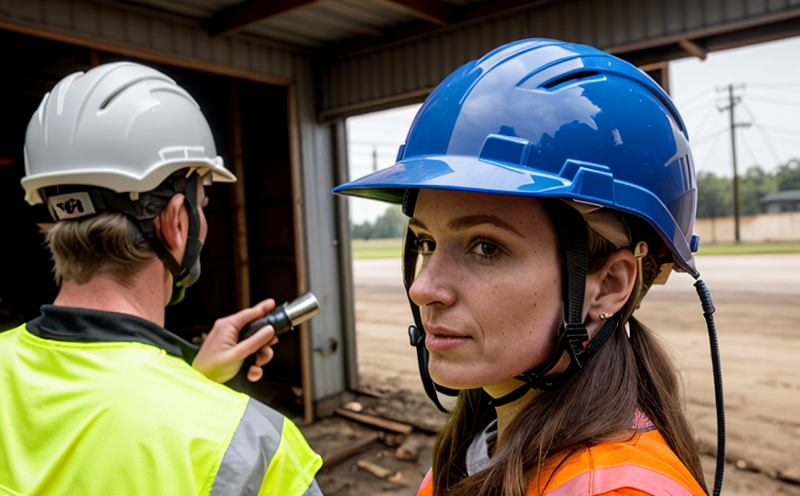Safety helmet inspection
The inspection of safety helmets is a critical process ensuring worker safety in various industries such as construction, manufacturing, and mining. Safety helmets are designed to protect the wearer's head from falling objects, impact forces, and other hazards present on job sites. The quality and compliance of these protective devices directly affect their effectiveness, making comprehensive inspections essential.
During inspection, key areas include visual checks for damage, cracks, or deformations; structural integrity tests to ensure no stress fractures; and durability evaluations under simulated workplace conditions. Compliance with relevant standards like ISO 4852 is crucial. This standard specifies the minimum performance requirements for head protection, including impact attenuation, penetration resistance, and electrical insulation.
The inspection process also involves verifying that all components are present and correctly assembled. Proper labeling, including product identification numbers, manufacturer names, and CE marking if applicable, must be checked to ensure compliance with regulatory requirements. Additionally, the presence of appropriate retention systems, such as chin straps or harnesses, is vital for ensuring secure fit and proper function.
For a thorough inspection, specialized equipment may be used. For example, impact tests simulate real-world scenarios where helmets are subjected to falling objects. These tests measure how well the helmet absorbs impacts without transferring excessive force to the wearer's head. Similarly, penetration resistance tests assess whether sharp objects can pass through the shell, which could compromise protection.
Visual inspections complement these mechanical tests by identifying any visible signs of damage that might indicate reduced performance or potential hazards. By combining visual and functional assessments with adherence to international standards such as ISO 12409, which covers the marking, labeling, and identification of safety helmets, laboratories can provide comprehensive inspections that ensure compliance and enhance worker safety.
In summary, a robust inspection process for safety helmets involves multiple steps aimed at verifying both structural integrity and adherence to relevant standards. This approach not only ensures the effectiveness of protective equipment but also contributes significantly to overall workplace safety.
Applied Standards
| Standard | Description |
|---|---|
| ISO 4852:2019 | Head protection for industrial workers—Minimum performance requirements and design specifications. |
| ASTM F1976-21 | Standard practice for testing safety helmets used in construction, manufacturing, mining industries. |
| EN 397:2015 | Head protection—Safety helmets—Requirements and tests. |
| IEC 61439-2:2018 | Safety helmets for use in electrical power generation, transmission, or distribution. |
Industry Applications
| Industry | Description |
|---|---|
| Construction | Helmets protect workers from falling debris and other hazards. |
| Manufacturing | Avoidance of injuries during machinery operations and handling heavy materials. |
| Mining | Protection against rockfall, explosions, and other mining-specific risks. |
| Railway Operations | Prevention of head injuries due to moving trains or maintenance activities. |
Customer Impact and Satisfaction
The inspection process for safety helmets has a significant impact on customer satisfaction. By ensuring that all helmets meet stringent standards, laboratories can provide peace of mind to customers who rely on this protective gear. This not only enhances worker safety but also reduces the risk of workplace accidents and related legal liabilities.
Customers in various sectors appreciate the detailed reports and certificates issued after inspections. These documents serve as evidence of compliance with international standards such as ISO 4852, which is widely recognized across different industries. Moreover, customers can use these reports for internal audits or to meet regulatory requirements imposed by government bodies.
The comprehensive nature of our inspection services allows us to identify potential issues early on, enabling customers to rectify them promptly and avoid costly delays. Our expertise in interpreting test results helps clients understand the performance characteristics of their safety helmets better, leading to more informed decisions regarding procurement and usage.
Our commitment to accuracy and reliability fosters long-term relationships with our customers. Regular feedback from satisfied clients attests to our ability to deliver consistent quality across all services provided. By focusing on customer satisfaction through thorough inspections and clear communication of findings, we aim to be the preferred choice for safety helmet inspection in the industry.





